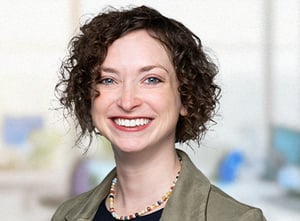In brief:
- The age demographic of the workforce is shifting, and generational intersection provides an opportunity for upskilling.
- Knowledge exchange should happen bi-directionally.
- Leaders must create programs that allow each group to play from their own strength.
The future of work is here. For the first time in history, five generations are working side by side, creating a labor market that spans over 50 years. Gen Z is expected to soon overtake Millennials as the largest generation in the workforce, and organizations are faced with the complicated task of bridging generational gaps, building multi-generational teams, and leveraging the strengths of all age groups in a shifting workforce.
The case for diversity, after all, is well-documented. An employee’s knowledge and experience increase with age, making the Silent Generation, Baby Boomers, and members of Gen X highly valued. Millennials and members of Gen Z, for their part, have an opportunity to help develop these older generations' technological skills and upskill them by redefining their ways of working. These digital natives also offer higher levels of EQ and empathy, a deeper appreciation for diversity, a better work-life balance, and more. Restructuring the way we think about mentorship into a two-way exchange of knowledge will build a better labor force for the future.
This effort, however, must touch every aspect of the organization. When building a culture of mentorship, leaders must consider how it will be experienced across all generations—and how it will enable each group to utilize its collective strengths.
The key to success lies in implementation. If done well, two-way upskilling makes senior workers more tech-savvy and gives them a greater sense of purpose, while empowering younger workers with insight and cultural experience. It creates a more connected workplace by bridging generation gaps and building a succession pipeline to groom young talent for executive positions. If done poorly, however, older workers believe that their time and skills are being undervalued, while younger ones feel that their organization does not care about developing them and become disengaged.
An article published by Brandman University outlines three elements that ensure a successful mentorship program between workers of all ages:
- A data-driven matching system that allows for personal and professional connections.
- Training and clear guidelines. This is especially key with this cutting-edge, two-way knowledge transfer model. If there is no proper guidance, the experience will be inconsistent, tedious, and ambiguous.
- An ingrained culture of mentorship. It must be embedded within your organizational processes, and this requires an iterative process built on continuous feedback from employees of all generations.
One client of ours, a quick-service restaurant, is a great example of how this works in practice. In this organization, it’s common for executives to identify young leaders to step into key portions of the executive's role; they consider these experiential development opportunities. The younger talent gains business acumen while also sharing their own perspective and insights with the company’s most senior leaders. To an outsider, it might appear that established executives have a smaller leadership presence than the young staff they place in these stretch positions; the reality is that they are intentionally developing younger generations and humbly putting themselves in a position to learn from juniors.
As Steve Jobs once said, "Innovation is the ability to see change as an opportunity—not a threat." There is an opportunity today to use the strengths of different age groups to prepare your people for the future of work. The age demographic and necessary skills of the workforce are rapidly shifting, which leaves your organization with the question: What will you do to capture this opportunity?
This blog was co-authored with Ben Deal, a Management Consulting Summer Intern at North Highland.
 About Ben Deal
About Ben Deal
Ben interned at North Highland in the summer of 2021. He supported the Strategy practice to deliver on engagements spanning workforce, operational, and customer transformations. He will graduate from the University of Georgia with a BBA in Marketing in May 2022. He is passionate about leadership development and mentorship, and his campus and community involvement has provided him with rich experience in both.










